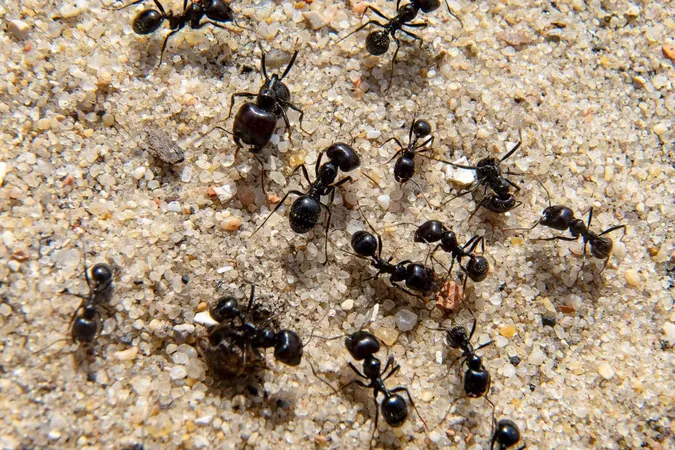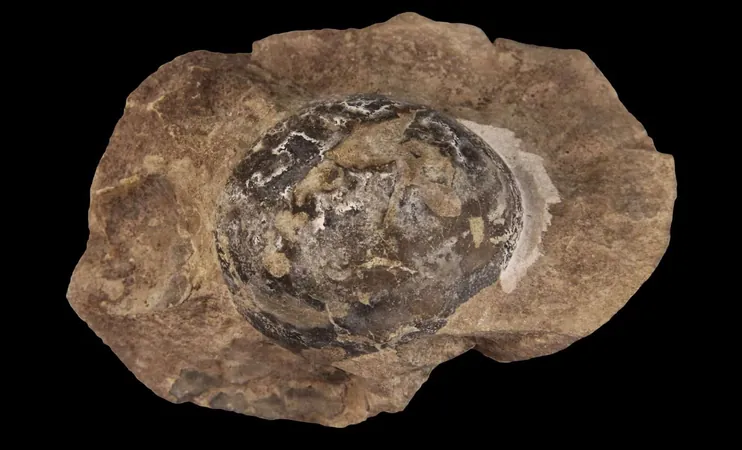
The Groundbreaking Ant-Wasp Connection: How an 8-Year-Old Revolutionized Earth Science
2025-01-12
Author: Lok
The Groundbreaking Ant-Wasp Connection: How an 8-Year-Old Revolutionized Earth Science
In a remarkable twist of fate, an 8-year-old boy named Hugo Deans has revolutionized our understanding of the complex relationships among ants, wasps, and oak trees, making headlines in the world of earth science. What began as a child's innocent observation in his backyard unveiled a fascinating saga of chemical mimicry, evolutionary tactics, and ecological teamwork among these seemingly unrelated creatures.
A Children's Eye for Discovery
On a typical day in his garden, young Hugo noticed what he thought were seeds being carried by ants. While many children may have brushed such a sight aside, Hugo shared his finding with his father, Andrew Deans, an esteemed entomology professor at Penn State. This simple curiosity sparked a journey that would challenge previous notions in ecological sciences.
Upon closer examination, Hugo's "seeds" turned out to be wasp galls—growths induced on oak leaves by gall wasps, designed to shelter and protect their larvae. While galls had been previously documented, their positioning near ant nests puzzlingly hinted at a potential collaboration that hadn’t been explored until now.
The Unlikely Alliance of Wasps and Ants
Further investigation by Andrew Deans and his research team revealed that gall wasps don't just manipulate oak trees; they have a remarkable strategy to coerce ants. By inducing oak trees to produce galls with nutrient-rich caps that resemble appetizing seed appendages, these clever wasps lured ants into a symbiotic relationship.
This interaction is reminiscent of myrmecochory, a well-known phenomenon where ants disperse plant seeds in exchange for nutritious appendages. However, gall wasps have taken this to another level, ensuring their larvae are not only transported to ant nests but that they also benefit from protection and an ideal environment.
The Spellbinding Chemistry of Attraction
The research team found compelling evidence that ants specifically favored galls with intact caps, shunning those without. This behavior speaks volumes about the caps' effectiveness as a lure. Chemical analyses revealed that these caps contain fatty acids that mimic the nutritional profile of the ants' natural diet, tricking them into perceiving the galls as food.
Notably, both ants and gall wasps gain from this relationship—a true mutualistic exchange. While ants feast on the enticing caps, the wasp larvae enjoy the safety of the ant colony, highlighting a sophisticated evolutionary interaction that raises questions about how these behaviors developed over time.
New Insights into Evolutionary Dynamics
The implications of this discovery stretch far beyond the ant-wasp relationship. Researchers are now left pondering how such intricate behavioral dynamics originated. Did ants initially adopt a gall-collecting behavior that gall wasps then took advantage of? Could it be that the manipulation by wasps predates the evolution of seed dispersal methods among plants? Each scenario ushers in a rethinking of evolutionary timelines and behaviors.
Hugo's finding highlights the essential role of curiosity in science, reminding us how the unencumbered minds of children can unveil details that adults often overlook. As Andrew Deans stated, “This multi-layered interaction is mind-blowing; it’s almost hard to wrap your mind around it.”
Wider Implications for Ecology and Conservation
The study is not only a testament to the curious nature of children but also emphasizes the intricate interdependencies found in ecosystems. An in-depth understanding of such relationships can inform better conservation practices by recognizing the vital roles that even the smallest creatures, like ants and wasps, play in sustaining ecological balance.
The research sheds light on the greater narrative of co-evolution and mutualism, urging scientists to explore overlooked interactions within nature that might hold secrets to how species adapt and thrive together.
Conclusion: The Power of Observation and Inquiry
The collaboration between an inquisitive child and established scientists reflects how extraordinary discoveries can emerge from combining fresh perspectives with rigorous research. As inquiries into the amazing ant-wasp connection progress, we’re reminded of nature's intricate beauty and the timeless importance of observation and curiosity—qualities that can lead to paradigm shifts in our understanding of life on Earth.
So, what do you think about this extraordinary find? Join the conversation and share your thoughts!





 Brasil (PT)
Brasil (PT)
 Canada (EN)
Canada (EN)
 Chile (ES)
Chile (ES)
 Česko (CS)
Česko (CS)
 대한민국 (KO)
대한민국 (KO)
 España (ES)
España (ES)
 France (FR)
France (FR)
 Hong Kong (EN)
Hong Kong (EN)
 Italia (IT)
Italia (IT)
 日本 (JA)
日本 (JA)
 Magyarország (HU)
Magyarország (HU)
 Norge (NO)
Norge (NO)
 Polska (PL)
Polska (PL)
 Schweiz (DE)
Schweiz (DE)
 Singapore (EN)
Singapore (EN)
 Sverige (SV)
Sverige (SV)
 Suomi (FI)
Suomi (FI)
 Türkiye (TR)
Türkiye (TR)
 الإمارات العربية المتحدة (AR)
الإمارات العربية المتحدة (AR)